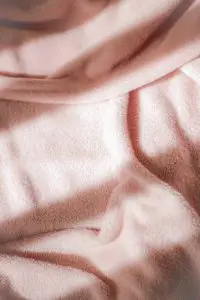Do you have to get a garment or make a garment for your next event? When selecting fabric for your garment, it is essential to get all the facts about the material. For example, if you love being outdoors on snowy slopes or just in the backcountry, it is vital to get the proper clothing. In addition, any fabric selected should be able to protect your body, and you should also be comfortable in it. That’s where this merino wool vs cotton comparison comes in handy.
Merino wool and cotton are essential materials with several advantages and slight setbacks. First, these materials are natural fibers; Merino wool comes from animal fleece, while cotton comes from plants. However, merino wool is quite expensive than cotton, but cotton is easier to care for than wool. These differences are essential to understand to help you select the suitable fabric. This guide will help you decide which material will give you the best benefits at the moment. So, let’s quickly dive in.
Merino vs Cotton – What is Merino Wool?
Merino wool is a variation of wool from a specific sheep breed. This breed is called merino and originates from Spain. What makes this type of wool unique from the others? Merino wool is relatively thin with some incredible warmth and moisture-wicking properties.
Compared to other kinds of wool, Merino wool is quite comfortable with impressive temperature regulation. Technically, regular wool can sometimes be 40 microns or more, but merino wool starts from 24 microns down to 15 microns. Now, the lower the micron, the finer and more expensive the wool will be. These properties are why merino wool is incredibly thin, breathable, more delicate, and costly.
Merino Wool vs Cotton – What is Cotton?
Cotton is a very popular warm-weather fabric. A lot of our clothes come from this material. There are several incredible advantages of this material that makes it so popular. Cotton material is a textile obtained from the fibers of the cotton plant. Manufacturers harvest the fluffy part of the cotton plant, comb the seeds, and then spin it into yarn for knitting. Cotton is lightweight, soft, inexpensive, breathable, and will keep the body cool in the summer. However, just like everything else, the material has its share of disadvantages compared to other fabrics.
What Are the Differences Between Merino Wool and Cotton
Yes! We understand that Merino wool and cotton are high-quality natural fibers, but what are the differences? Aside from the fact that both materials come from two different sources – Merino wool from animals and cotton from cotton plants. These two materials have their various strengths and setbacks. Now, let’s break these differences down for a better understanding.
Merino Wool vs Cotton – Breathability
Both materials are breathable fabrics. The structure of both merino wool and cotton fibers allows air to circulate efficiently throughout the material, even if the weave is tight. Although both merino wool and cotton make breathable fabrics, some fabrics still impact how breathable each material feels.
Cotton is a natural fiber, which means ample spaces between the fibers. This aids its breathability. Cotton fiber can also draw moisture from your skin; it evaporates into the air, making the cotton fabrics very breathable. This characteristic is not something you can find with other synthetic materials. This is because synthetic materials tend to clamp together, limiting the breathability capability.
On the other hand, Merino wool is best at pulling moisture from the fibers and keeping the moisture out of the fabric’s internal structure. Because Merino wool takes longer to absorb water, it feels breathable even in damp conditions. As a result, Merino wool fabrics feel breathable much longer than cotton fabrics.
Cotton materials sometimes feel less breathable, especially in damp weather, because it is more absorbent. Although air will still circulate through the cotton fabric, water, on the other hand, does not evaporate at the same time. Instead, water soaks into the fiber, making the material less breathable than merino wool.
Merino Wool vs Cotton – Softness
Cotton fibers rate the highest when it comes to the softness of fabrics. Cotton fiber is smoother compared to all other kinds of materials. This is because cotton fabrics’ softness comes naturally. The cellulose fibers that make up cotton fibers are natural and smooth than animal air. This is one of the advantages of wearing a cotton material. Cotton fabrics also soften as you use them and wash them repeatedly.
Merino wool, on the other, is soft as well but not as smooth as cotton fibers. This is because the protein structure of merino wool is scaled. Hundreds of small scales overlap to form the thread, and these scales can sometimes catch on each other or your skin. These scales are why the merino wool surface is rougher than cotton fibers.
Sometimes, manufacturers use treatments to smoothen and soften merino wool fibers, but cotton fibers achieve this softness naturally. So, regardless of the texture, thickness, or treatments, cotton fabrics will still be softer and smoother against merino wool fabric.
Merino Wool vs Cotton – Warmth, and Temperature
Many people use merino wool as a base layer material because of its temperature regulation properties. The fine hairs on the material tend to trap heat during cold temperatures ensuring that your body is well insulated. The heat dissipates easily through the strands when the temperature rises, thus leaving your body cool.
When you begin to work and swear, the merino wool does not trap the cold from the swear, and you will remain comfortable. Because of these incredible temperature regulation features, merino wool is popular in hiking, backcountry, and mountaineering clothing. This is because you can use merino wool fabrics when there is a rise in temperature or low temperature.
On the other hand, cotton has similar spaces in its fiber but is also more absorbent than merino wool. These spaces tend to get filled with water, not air. When the temperature is low or high, cotton can absorb moisture from the air and decrease the fabric’s warmth. However, cotton will only keep you warm until the material gets wet.
Merino Wool vs Cotton – Moisture-Wicking
Merino wool fabrics have some incredible moisture-wicking capabilities. This signifies that when the material absorbs moisture from your body, it evaporates and leaves you dry and comfortable. This is one of the factors to consider when choosing what to wear for cross-country skiing. While other materials will become muggy when they absorb heat from the body, Merino wool will not. This is because the light fibers from merino wool can hold high moisture levels compared to cotton. Other materials cannot retain moisture; they will leave you feeling damp.
There’s more! Because of this incredible moisture-wicking feature, merino wool becomes even more breathable. When clothing made from merino wool is thin, air can pass easily through the fabric strand. Indeed, this allows for air circulation and makes the clothing more comfortable.
However, cotton has a high absorbency characteristic which means moisture-wicking is not its strength. Yes! Water will evaporate from cotton easier, but merino wool will have less water to evaporate in the first place. As moisture leaves your skin and towards the air, more of it gets stuck in cotton than merino wool fabric. Now, the more water cotton absorbs, the less it wicks away. When the fibers become saturated, cotton takes a longer time to dry; hence, it becomes damp against your skin.
Merino Wool vs Cotton – Durability
Merino wool and cotton are durable materials, especially when compared to synthetic materials. However, merino wool is more durable than cotton in some aspects. Although, the durability depends on how well both materials are cared for properly.
As incredible as Merino wool fabric is, durability is not the wool’s strongest feature. If you decide to utilize clothing made from merino wool regularly, there are chances that it might last for a long time. But, again, this depends on how you properly care for the material. With this insight, you will be able to decide what to wear. If you wish to boost the durability of your merino wool clothing, then you must wash them in cold water.
Well, durability seems to be the strongest suit for cotton fabrics. Cotton materials can be worn multiple times and through various seasons. Cotton clothing can also be machine washed and dried compared to merino wool. These fabrics dry very well also, which means you can choose your clothing in different colors.
Merino Wool vs Cotton – Cost
Merino wool fabrics are pretty expensive when compared to other materials. As a result, many people tend to avoid the material, coupled with the durability issue. Merino wool is usually costly because sometimes these merino wool animals only have their fleece shorn once a year. This limits how many fabrics with merino you can produce in a year.
On the other hand, cotton is cheaper to produce, and there’s usually an ample supply worldwide. Sometimes, cotton may grow nearly year-round and produce multiple yields in certain climates. Cotton also requires less land with fewer resources for production when compared to merino wool.
After harvesting merino wool and cotton, merino wool needs more treatment and processes to become fabric. Although, there is also some high-end cotton from specific plants that can be pricier than the general cheap cotton. Cotton is popular for its affordability and accessibility, preferable for people on a budget.
Merino Wool vs Cotton – Ease of Care
How you handle or care for your fabrics will determine the fabric’s durability. Merino wool fabric requires more gentle handling for maintenance and care than cotton fabric. You can wash even at higher temperatures, machine wash, or even hand wash for cotton fabric. However, with proper care for both materials, merino wool tends to last longer than cotton.
Merino wool can take more pressure as you repeatedly use them than cotton fabrics. Holes appear faster in cotton fabrics than merino wool fabrics as you continue to use them. Although, cotton fabrics are easier to care for than merino wool fabrics. You can wash and dry it in machines, and it also requires less hands-on maintenance than merino wool.
Merino wool clothing can be worn several times and washed less than cotton materials. Merino wool is naturally antimicrobial, so it does not get soiled quickly like other fabrics. However, both fabrics will last longer with mild detergent rather than harsh soaps. Also, avoiding excessive sun exposure will increase the lifespan of your materials.
A Great Online Class: Color Theory for Textile Projects by Domestika
If you are interested in learning more about how you can create a successful name for your business, we recommend taking a look at the online class “Color Theory for Textile Projects”.
The course is currently under promotion, but you can use the discount code: T_BROWNLEES-PROMO to get an additional 10% discount on your purchase.
This online class offered by Domestika, at a very inexpensive price covers all you need to know to develop your textile project by leveraging color theory to create the perfect color palette. If you apply to the course through the link below you’ll be supporting 440 Industries, and we thank you for it!
Final Thought
There are a lot of differences between Merino wool and cotton fabrics. Merino wool provides some of the best features, including moisture-wicking, warmth, and comfort. However, merino wool fabric is expensive, less durable, and delicate. On the other hand, both merino wool and cotton are beneficial natural fibers. Now that you are aware of these differences, you will find a place for both fabrics in your wardrobe.








